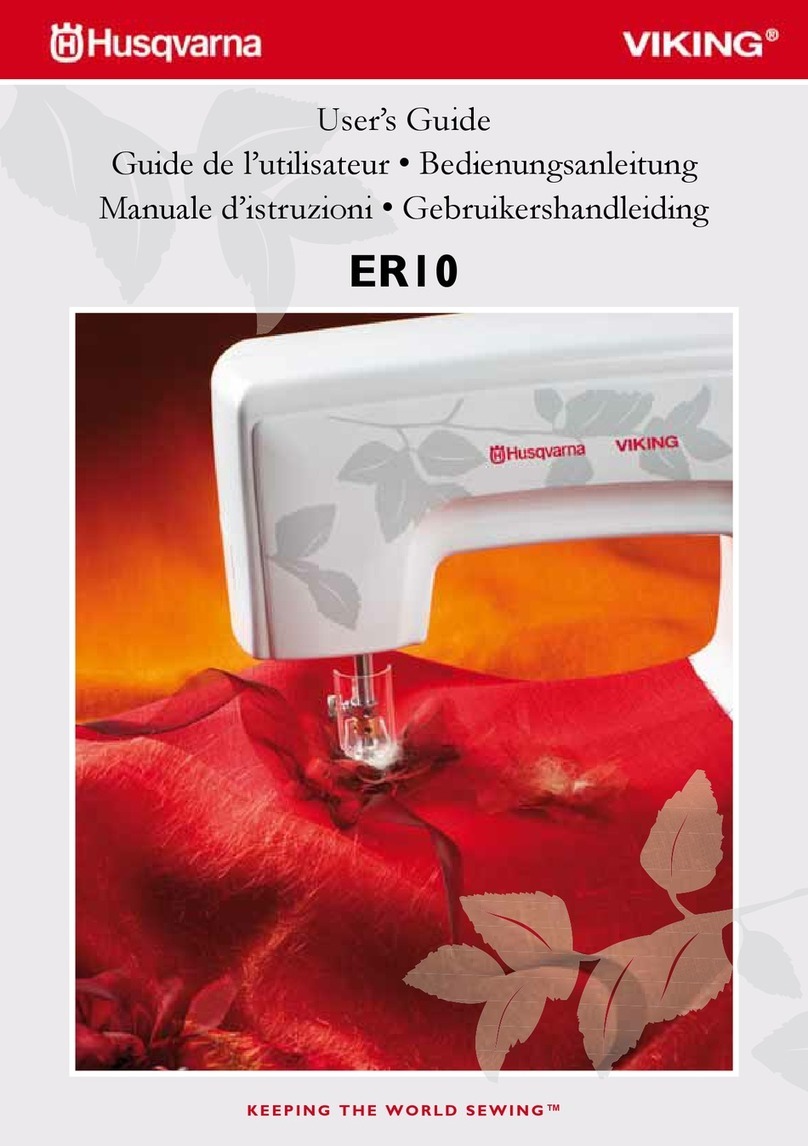Viking H|Class 500E User manual

USER’S GUIDE
500E_cover.indd 1 2009-11-24 11:01:44

“IMPORTANT SAFETY INSTRUCTIONS”
“When using an electrical appliance, basic safety precautions should always be followed, including the following.”
“Read all instructions before using this sewing machine.”
“DANGER - To reduce the risk of electric shock:”
“This sewing machine should never be left unattended when plugged in. Always unplug this sewing machine from the
electric outlet immediately after using and before cleaning.”
“WARNING - To reduce the risk of burns, Àre, electric
shock, or injury to persons: ”
1. “Do not allow to be used as a toy. Close attention is necessary when this sewing machine is used by or near children.”
2. “Use this sewing machine only for its intended use as described in this manual. Use only attachments recommended by
the manufacturer as contained in this manual.”
3. “Never operate this sewing machine if it has a damaged cord or plug, if it is not working properly, if it has been
dropped or damaged, or dropped into water. Return the sewing machine to the nearest authorized dealer or service
center for examination, repair, electrical or mechanical adjustment.”
4. “Never operate the sewing machine with any air openings blocked. Keep ventilation openings of the sewing machine
and foot control free from the accumulation of lint, dust, and loose cloth.”
5. “Never drop or insert any object into any opening.”
6. “Do not use outdoors.”
7. “Do not operate where aerosol (spray) products are being used or where oxygen is being administered.”
8. “To disconnect, turn switch to the off (“0”) position, then remove plug from outlet.”
9. “Do not unplug by pulling on cord. To unplug, grasp the plug, not the cord.”
10. “Keep Àngers away from all moving parts. Special care is required around the sewing machine needle.”
11. “Never sew with a damaged needle plate as this can cause a needle to break.”
12. “Do not use bent needles.”
13. “Do not pull or push fabric while stitching. It may deÁect the needle causing it to break.”
14. “Switch the sewing machine off (“0”) when making any adjustments in the needle area, such as threading needle,
changing needle, threading bobbin, or changing presser foot, etc.”
15. “Always unplug sewing machine from the electrical outlet when removing covers, lubricating, or when making any other
user servicing adjustments mentioned in the instruction manual.”
16. “If the supply cord is damaged, it must be replaced by the manufacturer or its service agent or a similarly qualiÀed
person in order to avoid a hazard”
17. “Don’t tie up in a bundle while in use. Remove the power cord from the sewing machine after usage and clean it with
dry cloth and keep it a dry place with the sewing machine.”
“CAUTION”
Moving parts-To reduce risk of injury, switch off before servicing. Close cover before operating machine.”
“SAVE THESE INSTRUCTIONS”
“This product is for household use, or equivalent.”
This appliance complies with EEC Directive 2004/108/EC covering the electromagnetic compatibility.
FOOT CONTROL (USA & Canada only)
Use Model YC-485 EC or Model JF-1000 with this sewing machine.
POLARIZED PLUGS CAUTION (USA & Canada only)
This appliance has a polarized plug (one blade wider than the other). To reduce the risk of electric shock, this plug is
intended to Àt in a polarized outlet only one way. If the plug does not Àt fully in the outlet, reverse the plug. If it still does
not Àt, contact a qualiÀed electrician to install the proper outlet. Do not modify the plug in any way.
500E_cover.indd 2 2009-11-24 11:01:49

CONTENTS
GET TO KNOW YOUR MACHINE
Machine overview.........................................................................................2
Accessories .......................................................................................................3
Stitch overview ...............................................................................................4
SET UP YOUR MACHINE
Unpack the machine....................................................................................8
Connect the power cord and foot control....................................8
Pack away after sewing .............................................................................9
Using the free arm........................................................................................9
Lower/raise the feed teeth.......................................................................9
Presser foot lifter ...........................................................................................9
Spool pins........................................................................................................10
Horizontal spool pin.................................................................................10
Vertical spool pin........................................................................................10
Thread the top thread.............................................................................11
Needle threader..........................................................................................12
Threading for twin needle.....................................................................13
Bobbin winding ............................................................................................14
Insert the bobbin........................................................................................15
Pull up the bobbin thread......................................................................16
Adjust top thread tension......................................................................17
Bobbin tension .....................................................................17
Change presser foot.................................................................................17
Changing the needle.................................................................................18
Needles............................................................................................................18
MACHINE FUNCTIONS
Function buttons.........................................................................................19
Needle Stop Up/Down ......................................................19
Reverse...................................................................................19
Start/Stop..............................................................................19
LED indicator.......................................................................19
Control panel functions .........................................................................20
Direct Selection buttons ....................................................20
Numerical Selection buttons .............................................20
Stitch length and width/needle position controls...........21
Twin needle safety................................................................21
Stitch reference guide..............................................................................21
SEWING
Utility Sewing .........................................................................................22-36
Decorative Sewing..............................................................................37-39
EMBROIDERY
Thread and stabilizer ................................................................................40
Attach the embroidery foot.................................................................41
Thread your machine...............................................................................41
Remove the accessory box..................................................................42
Feed teeth lever..........................................................................................42
Attach the embroidery unit .................................................................42
Remove the embroidery unit..............................................................43
Hoop the fabric...........................................................................................43
Attach and remove the embroidery hoop..................................44
Start embroidering ....................................................................................45
Installation of software.............................................................................45
Function buttons when embroidering............................................47
Start/Stop..............................................................................47
Needle Stop Up/Down .....................................................47
Reverse...................................................................................47
LED indicator.......................................................................47
Thread tension dial .............................................................47
Helpful information when embroidering......................................48
CARE OF YOUR MACHINE
Cleaning and oiling hook area and feed teeth...........................51
Oiling behind the sewing head cover ............................................52
Trouble Shooting ........................................................................................53
Display messages..................................................................53
Sewing....................................................................................55
Embroidery ...........................................................................56
eng manual rev1.indd 1 2009-11-24 11:12:23

~ 2 ~
1. Thread guide
2. Thread take-up lever
3. Thread tension dial
4. Sewing head cover
5. Thread cutter
6. Accessory box (Extension table)
7. Feed teeth lever
8. Bobbin winder
9. Bobbin winding stop
10. Needle stop up/down
11. Reverse Stitch button
12. Start/Stop button (only when
embroidering)
13. Control Panel
14. Stitch reference guide
15. Horizontal spool pin
16. Handle
17. Hand wheel
18. Thread guide
19. Vertical spool pin
20. Power/light switch
21. Cord socket
22. IdentiÀcation plate
23. Presser foot lifter
24. Buttonhole lever
25. Needle threader
26. Thread guide
27. Presser foot screw
28. Needle
29. Bobbin cover plate
30. Needle bar
31. Thread cutter
32. Needle clamp screw
33. Presser foot release button
34. Presser foot
35. Feed teeth
36. Stitch plate
37. Bobbin cover release button
38. Power cord
39. Foot control
40. USB cable
Note: Be sure to use the USB cable included with
your machine when doing embroidery.
MACHINE OVERVIEW
1Get to Know Your Machine
8
1
2
3
4
5
6
7
9
11
14
13
16
17
18
19
20
21
22
15
24
23
30
32
33
37
25
27
28
29
35
26
31
34
36
38
39
40
10
12
eng manual rev1.indd 2 2009-11-24 11:12:24

~ 3 ~1. Get to Know Your Machine
ACCESSORIES
User’s Guide (not pictured)
For Sewing Machine
1. Needles
2. Bobbins
3. Spool pin cap (small)
4. Spool pin cap (large)
5. Seam ripper (Buttonhole opener)/
Brush
6. Screwdriver for needle plate (large)
7. Screwdriver (large)
8. Screwdriver (small)
9. Zipper foot
10. Button sewing foot
11. Blind stitch foot
12. Buttonhole foot
13. Satin Stitch foot
14. Thread spool net (long)
15. Thread spool net (short)
16. Removable thread guide
For Embroidery
17. Vinyl bag
18. Bobbins
19. Scissors
20. Embroidery presser foot
Embroidery software CD (not pictured)
Note: embroidery system
is a software providing powerful options and
capabilities for embroidery. In order to install the
software, see page 45 or consult the software CD
for further information.
The Foot attached to your Sewing machine
upon delivery is called the Utility Foot. It
will be used for most sewing.
The Satin Stitch Foot (13) is another very
useful foot and should be used for most
decorative sewing.
When purchasing additional bobbins, make
sure they are Class I5 J. INSPIRA™,
#141001012 (4-pack)/#141001013
(12 pack).
Embroidery Unit
41. Embroidery hoop
attachment screws
42. Embroidery arm
43. Handle
44. Hoop bracket
45. Release lever
46. Connector
Hoops
One small and one large hoop
is included with the machine.
47. Embroidery hoop
connector
48. Hoop adjustment screw
49. Outer hoop
50. Inner hoop
414243
44
45
46
47
49
50
48
1234
567 8
9 10 11 12
14 15 16
13
17 18 19 20
47
49
50
48
eng manual rev1.indd 3 2009-11-24 11:12:24
Table of contents
Other Viking Sewing Machine manuals
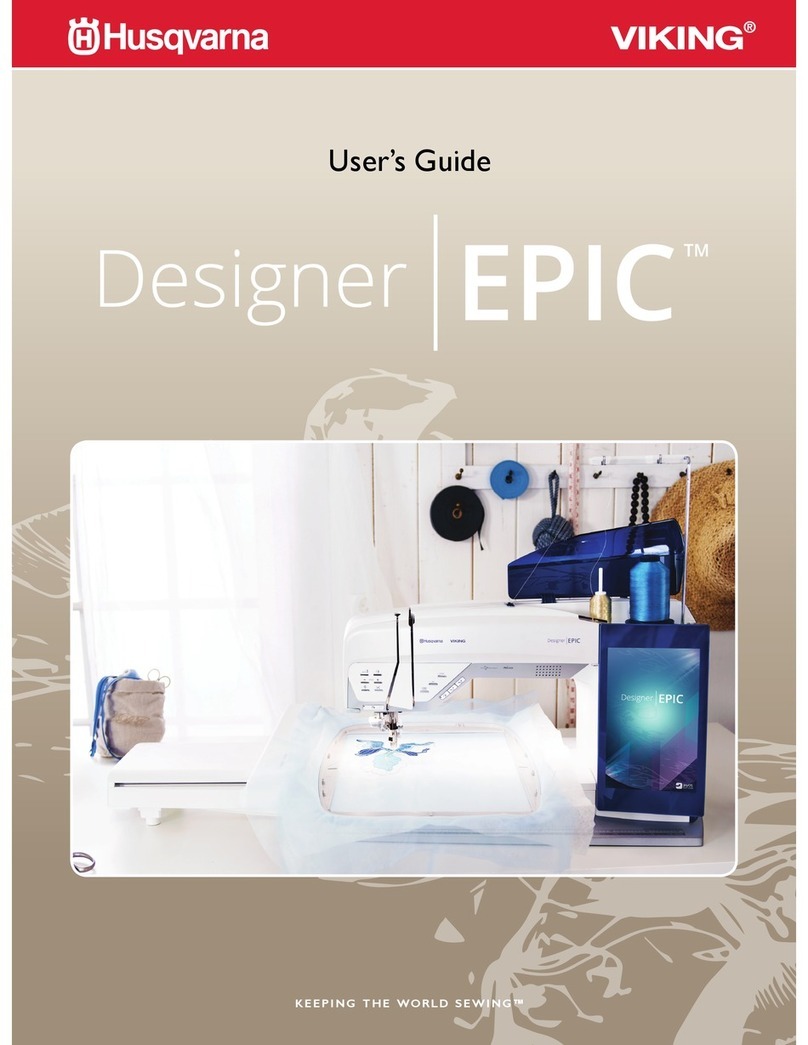
Viking
Viking Designer EPIC User manual

Viking
Viking Emerald 203 User manual
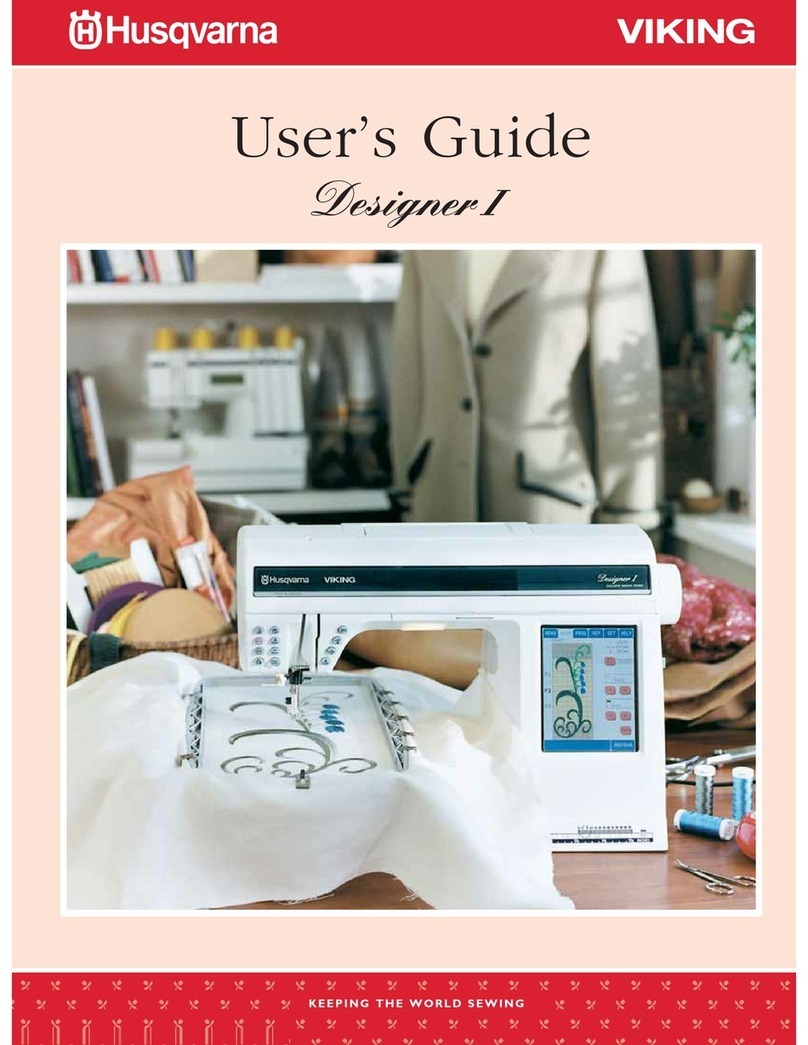
Viking
Viking Designer I User manual
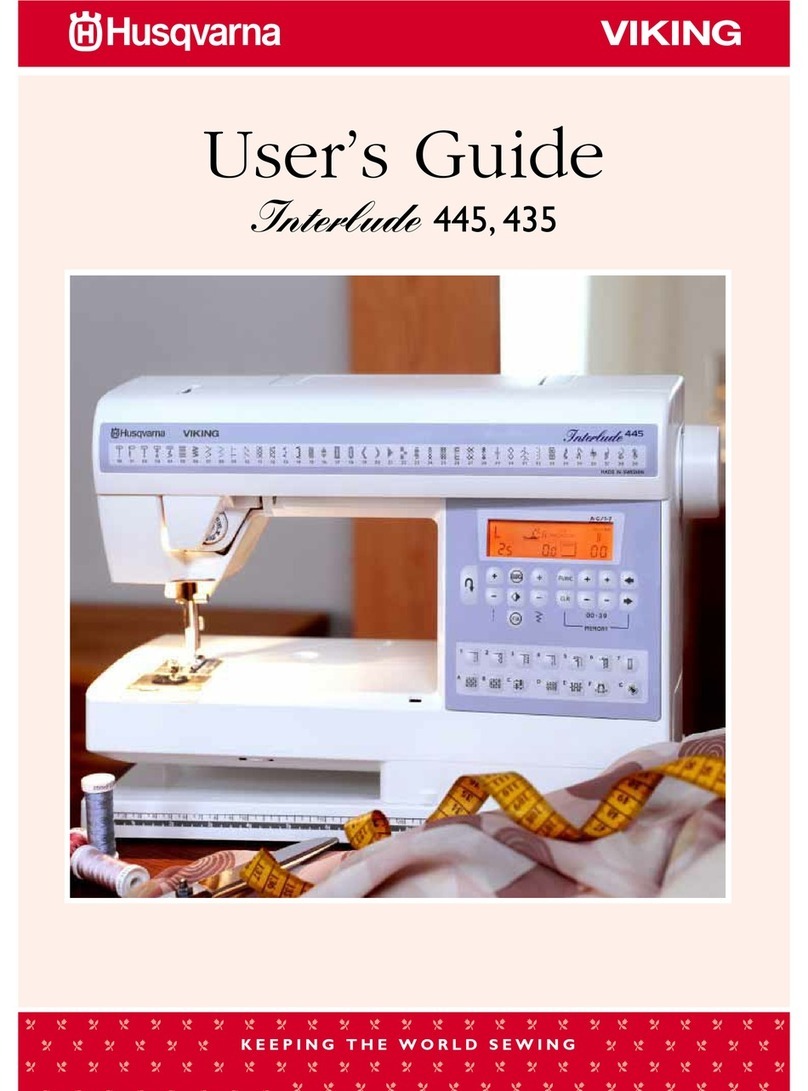
Viking
Viking Interlude 445 User manual

Viking
Viking Turissa Instruction and safety manual
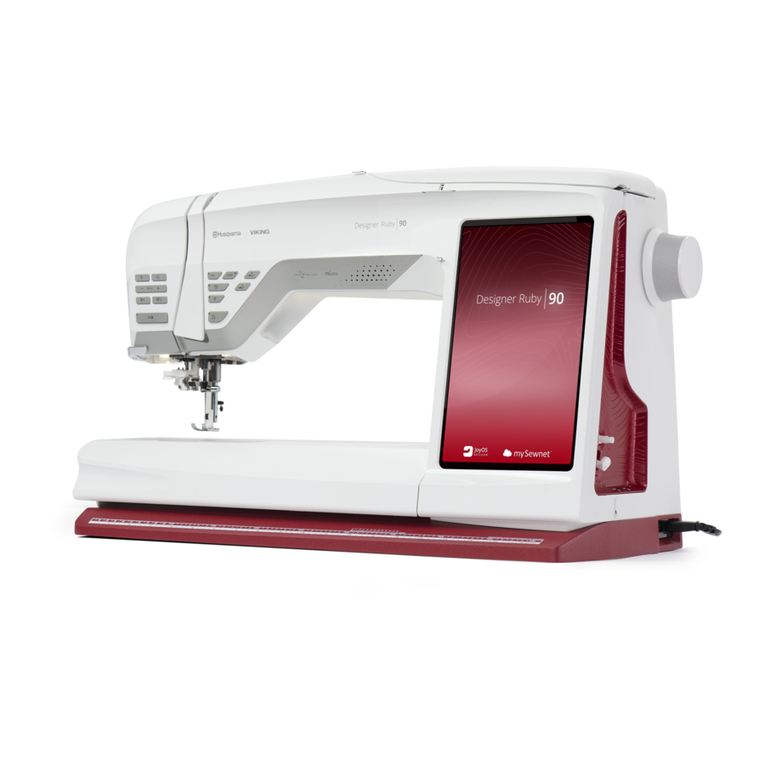
Viking
Viking Designer Ruby User manual

Viking
Viking 3260 User manual
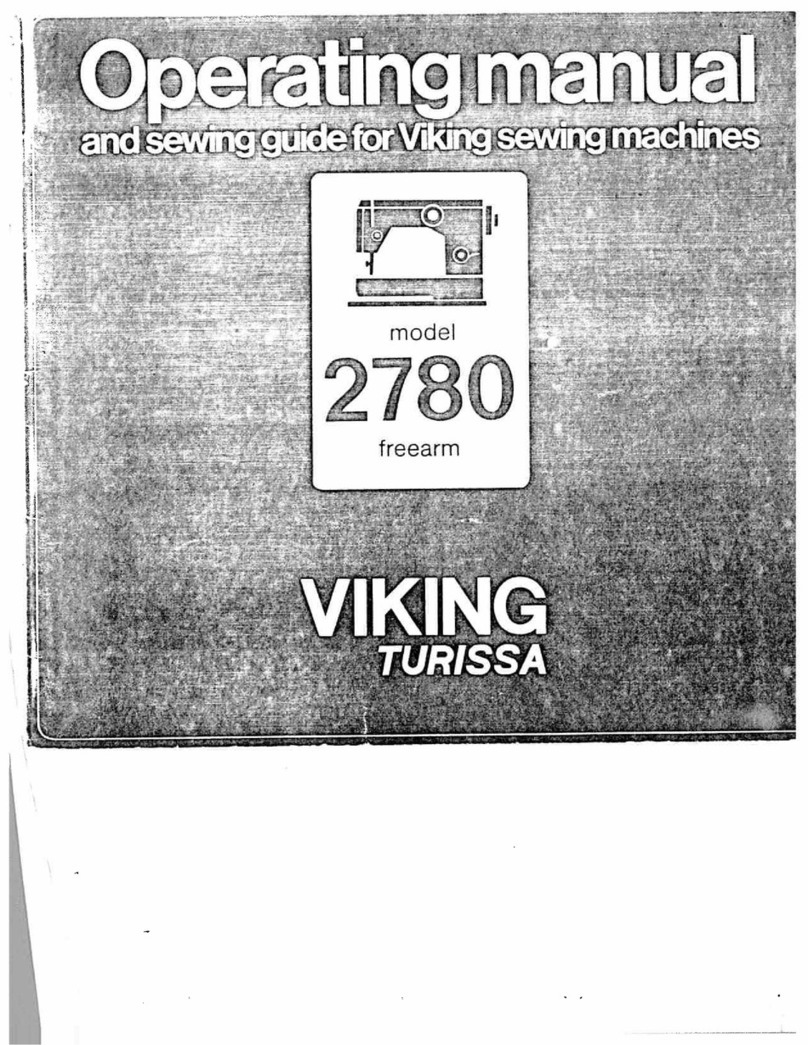
Viking
Viking 2780 User manual
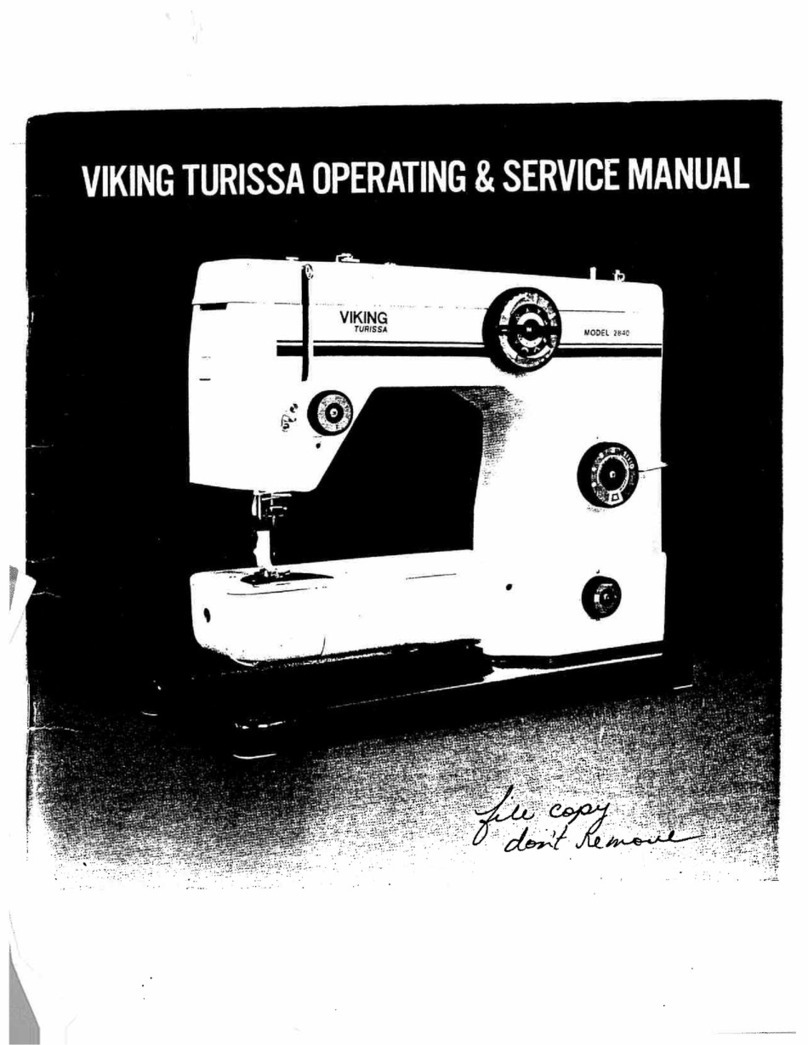
Viking
Viking Turissa Service manual

Viking
Viking Huskystar 207 User manual
